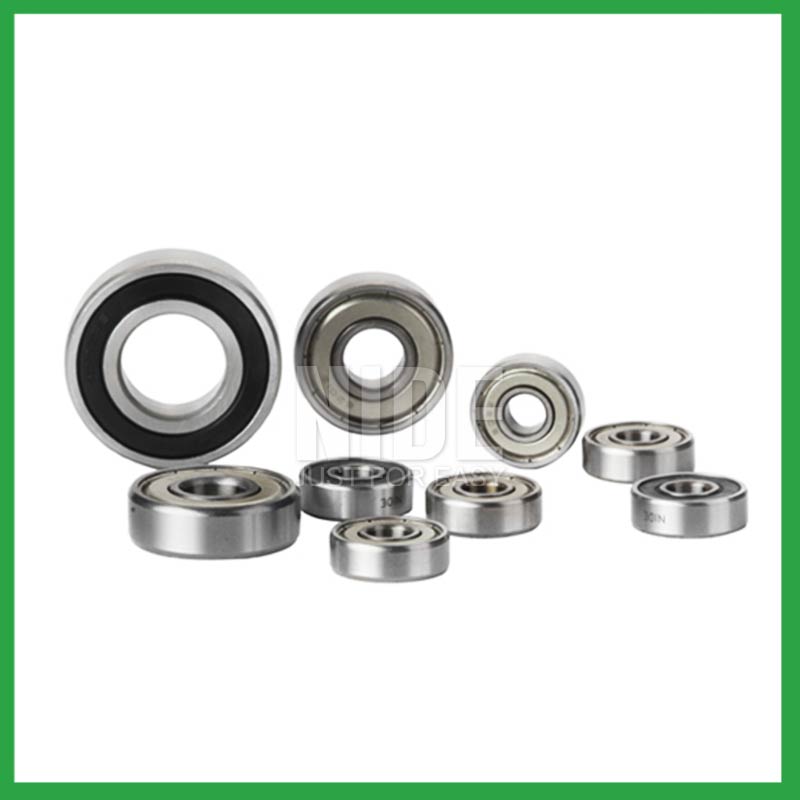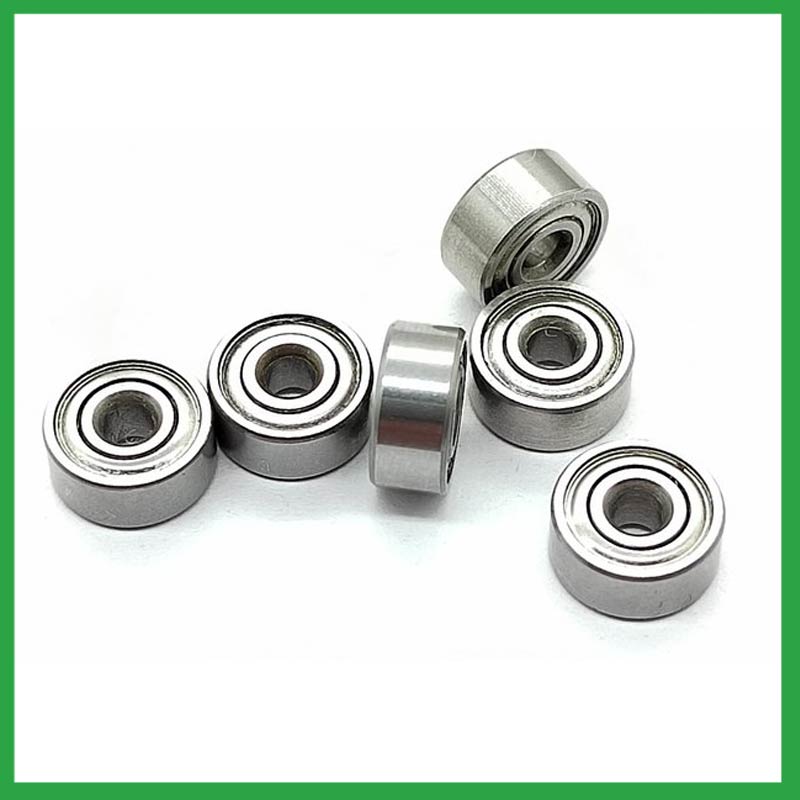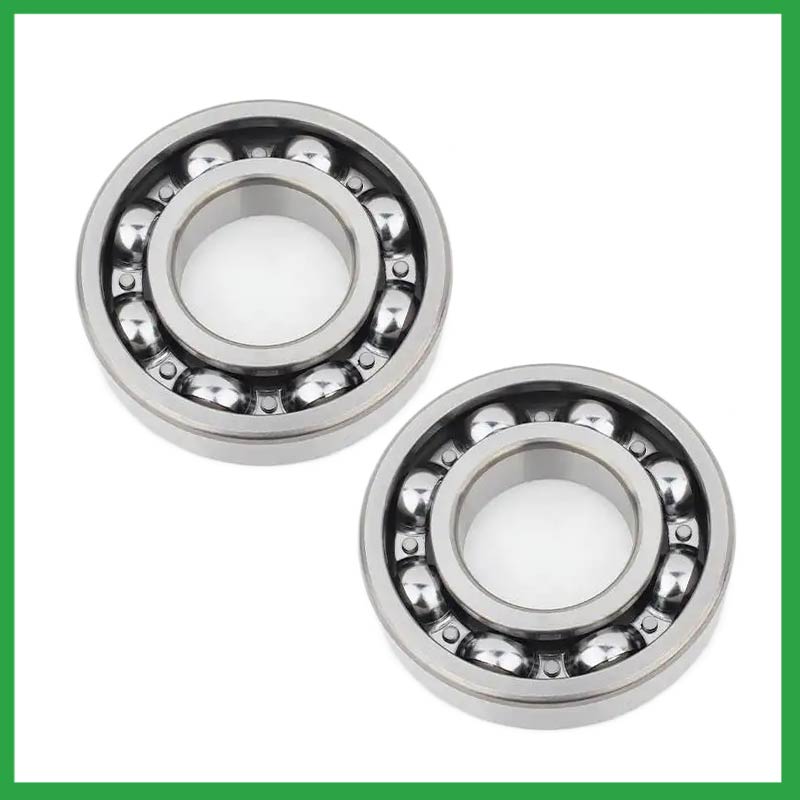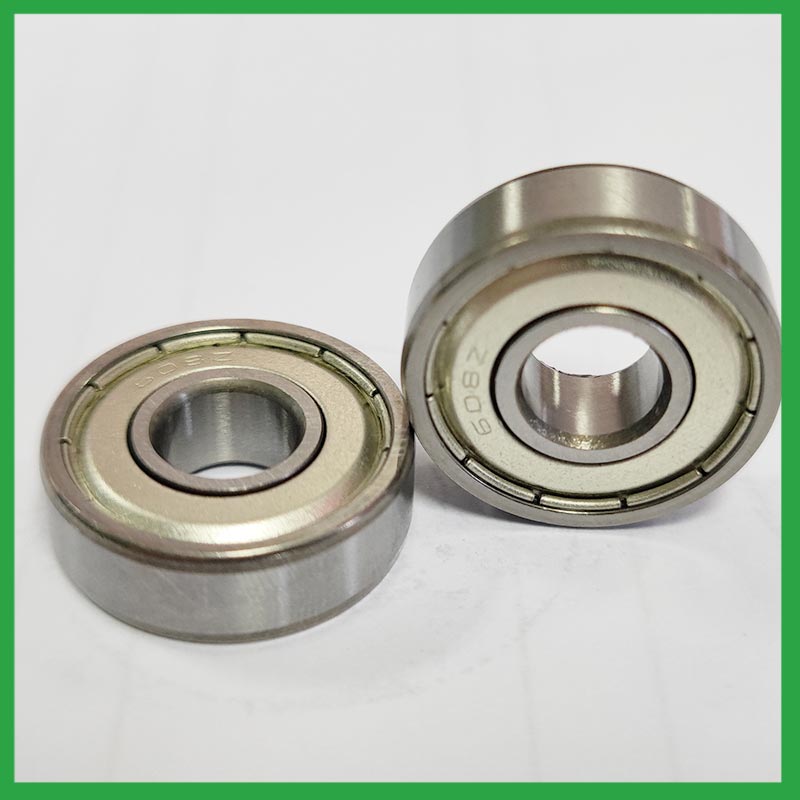PRODUCTS
CONTACT US
Ningbo Nide International Co., Ltd.
一一
· Contact person:Jack Zeng
· Mob/Whatspp/WeChat:0086-13738869026
· Email:emarketing@nide-group.com;marketing4@nide-group.com
· Add:No. 169, Wohushan Road, Daqi Subdistrict, Beilun District, Ningbo, China

Nide team could manufacture ball bearing as per customer’s drawing and samples.
If customer only has samples, we could also design drawing fo r our customer.
We also provide customized service.
Our ball bearing is widely applied the different industrials.
Established in 2010, Haishu Nide International is a modern enterprise specializing in the production of high-density bearings, with a factory area of over 9000 square meters. We have an excellent staff team, excellent production lines, and complete testing methods. Our main products are spherical roller bearings, cylindrical roller bearings, ball bearing,carbon brush,shaft,magnet,thermal protector,fan,insulation paper, etc.
At present, our products have been sold to Oceania,Africa,Europe and other regions, as well as more than 50 countries and regions such as Seychelles,Egypt,Azerbaijan,French Polynesia. Strict quality control system, plus strong technical team allow us to offer the reliable machines to our customers. The philosophy of ” Service, Profession, Prompt, Innovation” help us to win the customer favor.

| Parameter | Information |
| Product Name | rod end ball bearing |
| Brand Name | Nide |
| Place of Origin | China |
| Type | Ball |
| Material | ceramics, etc. |
| Sample | Avaible |
| Warranty | 3months-1year |
| Lubrication | Dry/ Oil |
| Application | high-speed electric tools,small rotary motors, etc. |
| Port | Ningbo/Shanghai |
| Size(mm) | customize |
| Export Country | Argentina,Brazil,South Korea,Somalia,Sri Lanka,Congo, Republic of the,Colombia...etc |
| Export region | Oceania,America,Europe... |
| Certification | ISO 9001 Certification,CE-stator coil forming machine,CE-stator coil winding machine,etc |
| Precision Rating | as per customer's requirement |
| Feature | Good wear resistance,High precision...etc |
| Packaging Details | Suitable for sea transportation |
| Color | Silver gray+customized |
| Seals Type | Rubber seals |
| Service | Prompt Delivery |
| Supply Ability | 100000-500000 Piece/Pieces per Month |
| Lead time (days) | 15-20 (To be negotiated) |
Please note: The above table data is for reference only. For specific information, please contact us.
Bearings with ball bearings as rolling elements mainly include deep groove ball bearings,adjustable ball bearings,angular contact ball bearings,thrust ball bearings, etc.
Before use, the model, size, and design of the ball bearing should be confirmed to ensure suitable application;
During installation, the installation load of the ball bearing should be minimized as much as possible to avoid unnecessary damage;
The bearing shaft and the bearing frame should be stable at the same time to avoid excessive tension.
Ball bearings have many advantages, making them highly competitive in the market.
Firstly, they are very durable and have good wear performance, making their service life longer than many other types of bearings.
Secondly, they are easy to install and can provide low friction performance in various applications.
Thirdly, they require a relatively low level of maintenance, making them cost-effective.
In addition, compared to many other types of bearings, their purchase cost is relatively low, making them an economical choice.




rod end ball bearing---FAQs Guide
2.Are there ceramic rod end ball bearing designed for specific applications requiring high-temperature or corrosion resistance?
3.What is the load distribution within a rod end ball bearing, and how does it vary between different bearing configurations?
4.How do rod end ball bearing provide smooth and controlled motion in various mechanical systems, such as conveyor belts or automobiles?
5.Are there specific rod end ball bearing designed for applications in the aerospace and aviation industries, and what standards do they adhere to?
6.Can rod end ball bearing handle shock loads and high-impact conditions in heavy machinery?
7.As a rod end ball bearing manufacturer,Your product certifications?
8.How do rod end ball bearing handle radial loads, axial loads, and combined loads, and what are their load-carrying capacities?
9.What are the advancements and innovations in rod end ball bearing technology that have emerged in recent years?
10.What are the common materials used in rod end ball bearing manufacturing?
11.What is the role of rod end ball bearing in reducing friction and wear in automotive applications, such as wheel hubs and transmissions?
12.What is the typical noise level associated with rod end ball bearing, and how are noise-reduction techniques applied?
13.Do rod end ball bearing come in various tolerance classes?
14.Can rod end ball bearing be used in vacuum or cleanroom environments, and what measures are taken to prevent outgassing or contamination?
15.What maintenance practices are recommended to extend the lifespan of rod end ball bearing and prevent premature failure?
1.Are there self-aligning rod end ball bearing that accommodate misalignment and shaft deflection in rotating equipment?
These rod end ball bearing are particularly suitable for applications where misalignment can arise from errors in mounting or shaft deflection. A variety of designs are available with cylindrical and taper bores, with seals and adapter sleeves and extended inner rings.
2.Are there ceramic rod end ball bearing designed for specific applications requiring high-temperature or corrosion resistance?
Ceramic rod end ball bearing are a special type of bearing made of ceramic materials, offering superior wear resistance, corrosion resistance, and high-temperature performance. They provide excellent performance in applications requiring high speeds, high temperatures, and resistance to corrosion.
3.What is the load distribution within a rod end ball bearing, and how does it vary between different bearing configurations?
The load distribution between the rolling elements and raceway is crucial in performance evaluation of rolling element bearings. Determine the load distribution by measuring the strain response at the bearing surface with a notched housing. Finite element analysis shows that the introduction of notches does not affect the load distribution. An experimental system was developed to investigate the load distribution in a cylindrical roller bearing. The experimental static load distribution agrees well with the theoretical calculation. The dynamic load at specific position of load zone reflects the manufacture difference among rollers and dynamic balance of distributing loads.
4.How do rod end ball bearing provide smooth and controlled motion in various mechanical systems, such as conveyor belts or automobiles?
In essence, rod end ball bearing operate on the principle that it's far more efficient to roll over surfaces than to slide, thereby significantly reducing friction and facilitating smooth movement of machinery parts.

5.Are there specific rod end ball bearing designed for applications in the aerospace and aviation industries, and what standards do they adhere to?
Airframe control rod end ball bearing are specialized bearings tailored for aircraft structures, particularly control systems and surfaces. Designed for low-speed oscillatory applications, they offer precision and support, effectively managing misalignments and flight-induced stresses.
Airframe Control bearings are lightweight, corrosion-resistant, grease-lubricated, and are sealed on most occasions. They come in precision grades for running accuracy.
6.Can rod end ball bearing handle shock loads and high-impact conditions in heavy machinery?
As a general rule, rod end ball bearing are used at higher speeds and lighter loads than are roller bearings. Roller bearings perform better under shock and impact loading. Ball bearings tolerate misalignment better than roller bearings do. Roller bearings can handle heavy combined radial and thrust loads.
7.As a rod end ball bearing manufacturer,Your product certifications?
ISO9001:2015 certificate,ISO 9001 Certification,CE-stator,etc.
8.How do rod end ball bearing handle radial loads, axial loads, and combined loads, and what are their load-carrying capacities?
The type of bearing used also varies between these loads. While deep-groove rod end ball bearing are better equipped to handle radial loads, thrust ball bearings are designed for axial loads. However, it's essential to note that most bearings, such as angular contact ball bearings, can handle both radial and axial loads.The Bearing Static Capacity, Co, is the maximum load that can safely be applied to a non-rotating bearing that will not cause subsequent bearing operation to be impaired. It is based on calculated contact stress at the center of the most heavily loaded rolling element where it contacts the Inner Race.

9.What are the advancements and innovations in rod end ball bearing technology that have emerged in recent years?
Significant advancements have been made in rod end ball bearing steels over the years. Modern, ultra-clean bearing steels contain fewer and smaller non-metallic particles, giving ball bearings greater resistance to contact fatigue.
10.What are the common materials used in rod end ball bearing manufacturing?
Most rod end ball bearing are made of a type of steel known as high carbon chromium steel, often called chrome steel. This is used for reasons of cost and durability. Bearings are also made from other materials such as stainless steel, ceramics and plastic.
11.What is the role of rod end ball bearing in reducing friction and wear in automotive applications, such as wheel hubs and transmissions?
When a load is applied to a ball bearing, the rod end ball bearing roll freely between the inner and outer rings. This rolling action significantly reduces friction compared to sliding contact, resulting in smoother rotation and reduced wear.
12.What is the typical noise level associated with rod end ball bearing, and how are noise-reduction techniques applied?
To measure in accurate way the rod end ball bearing noise under rotation during their manufacturing process is a key activity particularly in the production of medium, small and ultra-small deep groove ball bearings. This capability in bearings noise analysis has become the real distinguishing element between a standard bearings noise equipment and a superior class one.
The various types of vibration and sound in rolling bearings can be grouped in four main categories: structural, manufacturing, handling and other. The structural vibration consists mostly of race, click, squeal and cage noise: it can be continuous or intermittent depending on specific cases. The manufacturing vibration is instead related to the waviness noise generated by the geometrical imperfections of inner and outer ring and of rolling elements, being always continuous in nature. The so-called handling vibration is normally associated with flaw and contamination and is generating – in most of the cases – irregular noise. Then there are other types of vibrabition that include noise generated by sealing and lubricant (irregular) or by runout (continuous).

13.Do rod end ball bearing come in various tolerance classes?
Bearing tolerances are standardized by classifying bearings into the following six classes (accuracy in tolerances becomes higher in the order described): 0, 6X, 6, 5, 4 and 2.
14.Can rod end ball bearing be used in vacuum or cleanroom environments, and what measures are taken to prevent outgassing or contamination?
Bearings specify stainless steel for vacuum or cleanroom applications as stainless steels used for the rings, balls and retainer exhibit low outgassing. They usually supply open or shielded stainless steel bearings as vacuum bearings as these will outgas less than a nitrile rubber sealed bearing.
15.What maintenance practices are recommended to extend the lifespan of rod end ball bearing and prevent premature failure?
Proper handling and installation of rod end ball bearing is essential to preventing premature failure. Ensure that bearings are stored and transported in a clean, dry, and vibration-free environment. During installation, ensure that bearings are properly aligned, and torque is applied correctly.

